Plan before you plant
Expert advice on planning plants in your garden
Want to give your garden a planting makeover? Perhaps your borders are looking a bit tired and need a refresh, or you’re ready to start all over again with a blank canvas. We’ve asked our Gardener of the Year judges, and award-winning garden designers Humaira Ikram and Matt Childs to let us in on their secrets to garden planting and planning top tips. We’ll help you decide on the perfect flower bed layout for a charming garden full of beautiful blooms.
Skip to...
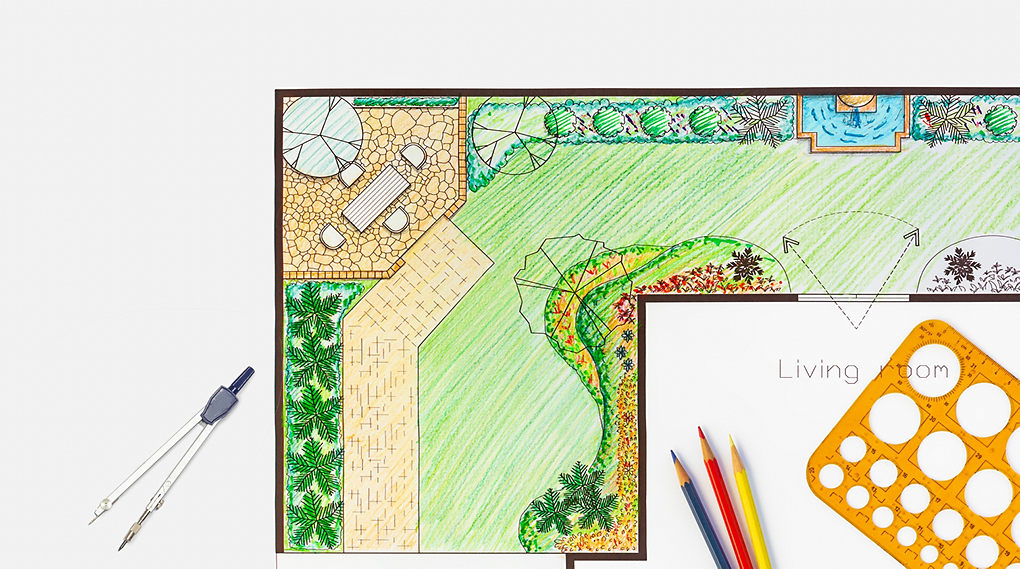

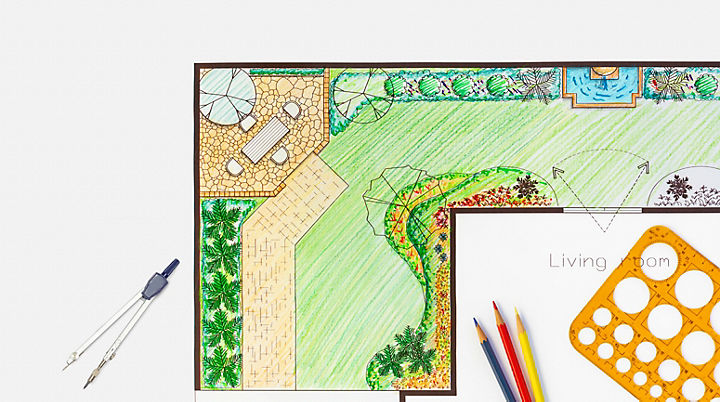
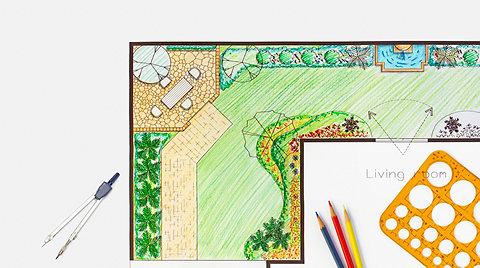
Step 1 - Create a garden mood board
What does your heart desire?
Think carefully about what it is you want to achieve from the planting in your garden. In terms of look and feel it’s a good idea to seek out inspiration online, in books and by visiting public gardens.
How do you want to feel within your garden space in terms of mood and atmosphere? Are you hoping to achieve a tranquil space perhaps planted with calming greens and whites or are you looking for a vibrant energetic feel, perhaps with hot colours and lots of dramatic foliage? When we begin designing a simple mood board can be helpful to bring ideas together, cutting pictures out of magazines that you like and assembling them on a large sheet of paper or creating a mood board on Pinterest. We believe gardens can be magical places, so don’t forget about the element of surprise in the garden and those special plants that are going to give your garden focal points and the ‘wow factor’.
It’s also important to consider how plants might be able to fulfil certain functional requirements in your outdoor space. For example, does part of your garden feel a bit overlooked by the neighbours and a carefully positioned tree could help provide some added privacy. Perhaps your garden is a bit open to prevailing winds and could do with some shelter, or it is close to a road and you would like to reduce traffic noise? Hedges may be the answer! They come in many forms from classic evergreens such as Yew and Box to more informal native hedging which provide all-year-round interest and great habitats for wildlife. They can really help define and enclose your outdoor space providing shelter and screening.
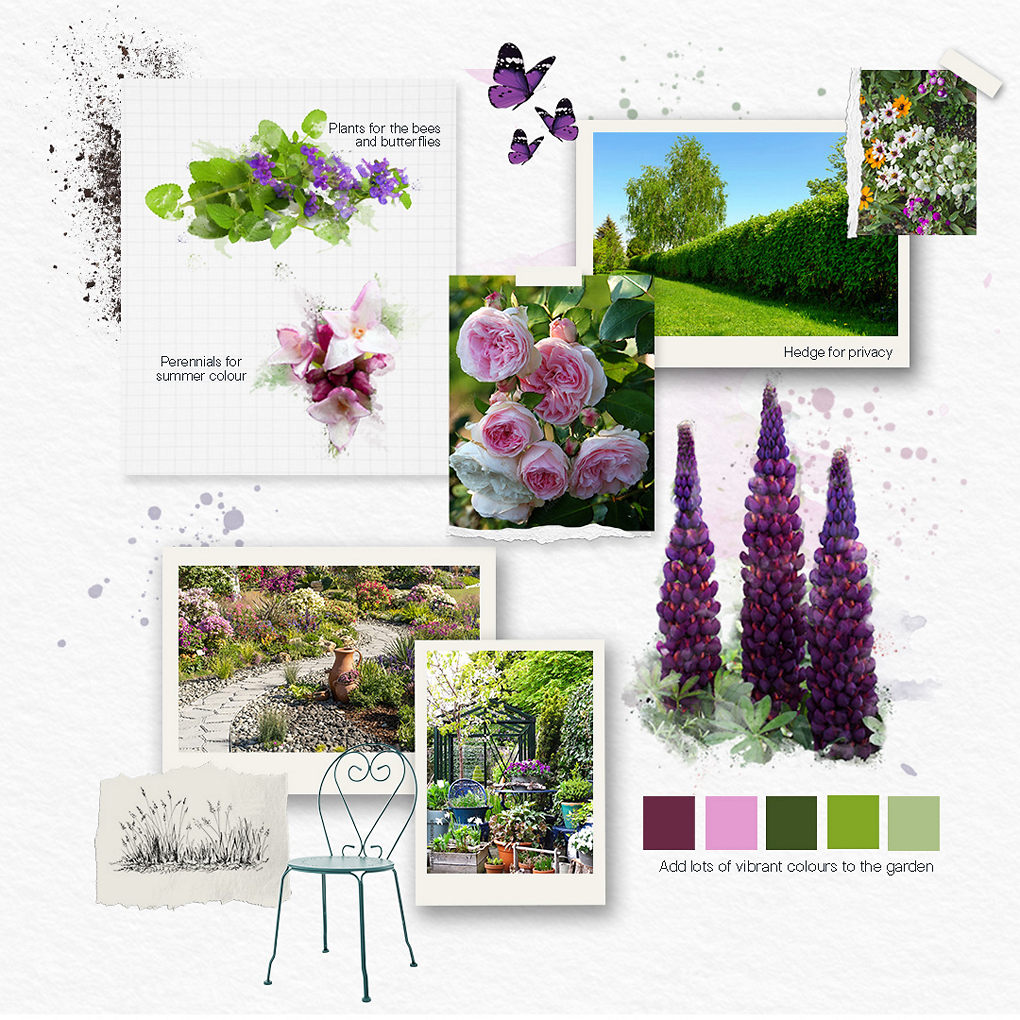

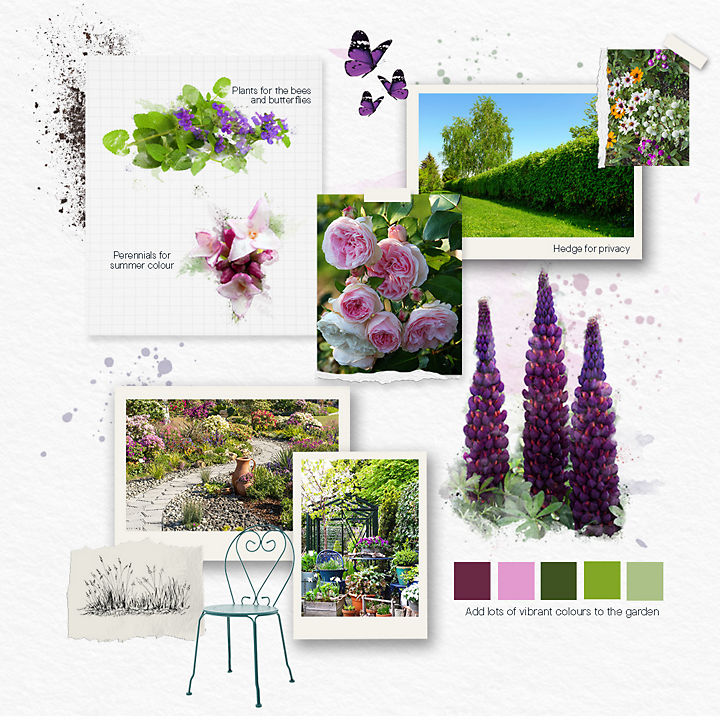

Step 2 - Get to know your garden
Getting to know the growing conditions in your garden will help you choose the right plants for the space. You want to ensure your new plants will thrive not just survive!
As designers we call this stage site analysis and spending sufficient time on these observations and investigations pays dividends in the long run. Here is a checklist of things to consider:
- Location – Is your garden rural, urban, coastal etc. and what plants best suit the surrounding landscape.
- Soil type – Do you have clay, sandy loam or chalk and as a result is your soil free draining or moisture retentive.
- Soil pH - Is your soil acidic, alkaline or neutral. A simple soil test kit can be purchased online to determine this, but your main aim here is to avoid planting acid loving plants that like an ericaceous soil in an alkaline soil e.g. Rhododendron, Azalea, and Pieris. The same is true of plants that like an alkaline soil, as they will not be happy and thrive in an acid soil. Example of alkaline loving plants include Lilacs, Lavender, and Campanulas.
- Climate – Temperature and rainfall for your location and in particular note if your garden has an unusual climate, for example a micro-climate or a frost pocket.
- Aspect - Where are the areas of the garden that are mainly in sun, shade or part shade. You will want to make sure that you place plants according to their preferred levels of sunlight.
- Size of area to be planted - You need to consider how big your new plants are going to grow in terms of height and spread. If you under plant you will be leaving gaps in your border for weeds and if you overplant you will end up with a bit of a squash, with plants not performing to their full potential as they compete for light and nutrients.
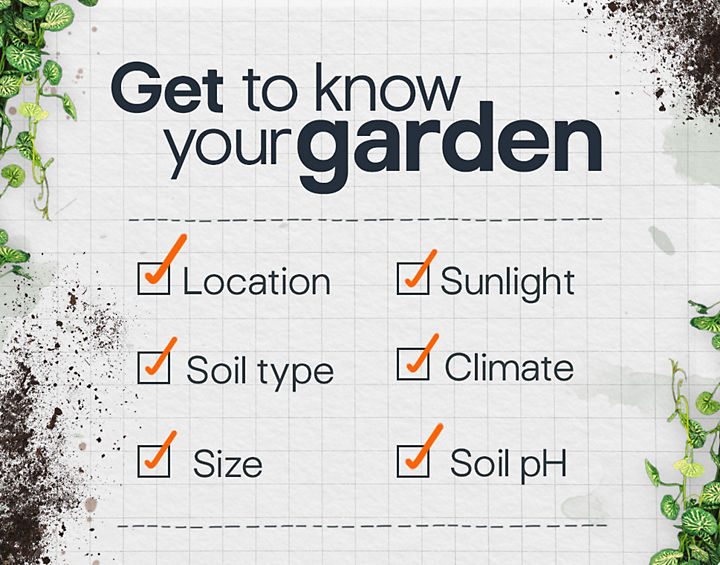


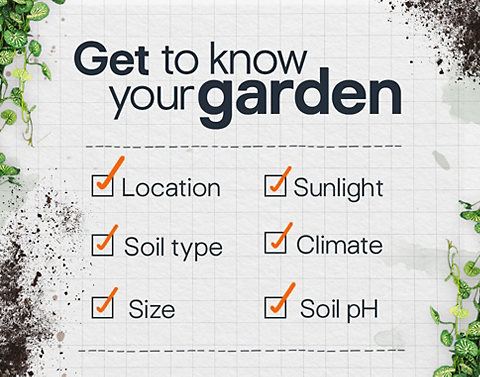
Step 3 - Decide on your plant shopping list
Before you set out to your B&Q store to fill your trolley with lovely new plants it is often helpful to have a shopping list. Drawing on your findings and thoughts from the stages above come up with a list of plants that will work in your space and create the effect you have in your mind. Some time spent online or with a plant encyclopaedia will help you to select the right plants.
Think about the seasons, and if you don’t have interest in the garden at a particular time of year now, is the time to plug that gap. Remember you are aiming for all-year-round interest in your garden and it’s not just about flowers. Plants have wonderful foliage too - bringing colour, texture, shape and form to your outdoor space. We certainly have a large range of trees, shrubs, perennials, annuals and bulbs - all the ingredients to create your perfect planting scheme.
Think about the quantities you are going to need, bearing in mind the eventual height and spread your new plants will grow to. When it comes to perennials and annuals we would recommend planting in groups for a more natural, impactful effect. Plant in odd numbers too, so groups of 3, 5 and 7.
Step 4 - Plant shopping (our favourite bit)
When you arrive at your local B&Q store you may feel a bit overwhelmed by the amount of choice, but feel free to take plants off the shelf and try them together in combinations.
There is nothing like having the actual plants in front of you. B&Q’s plants have been grown by top class nurseries who have trialled and tested the plants before they arrived on shelf in store, so you can be assured of healthy, quality plants. Make use of the growing instructions along with care and maintenance provided on the plant labels too.
You may be tempted by some plants in store you had not considered, but if you’re sure they will be happy in your grow in your conditions then we say, ‘go for it’. Gardening is fun and creative and we love a bit of spontaneity. Every year B&Q extends their plant range, which include special components to introduce and keep your garden fresh. (Check out our story on the new Dianthus Electric Dreams).
Step 5 - Planting up and aftercare
We recommend that before you purchase your new plants, you prepare your soil so that you can plant as soon as possible. You may want to add some peat free soil improver or even some of your own homemade compost. Mycorrhizal fungi is also a great idea to help build fungal communities underground and help your plants’ roots establish. Remove weeds and large stones and then you are ready to plant.
Make sure that your plants are planted level with the ground – not too deep, not too shallow. Backfill, gently firm in, and give them a good water. Your plants may benefit from an occasional feed and don’t forget to water through-out the season and dead head spent flowers for a longer flowering period.
Lastly, don’t forget to spend lots of time kicking back and enjoying the plants in your garden.
Matt and Humaira’s tips:
- Seek out lots of sources of planting inspiration to help you with the style and atmosphere you are trying to create
- Take note of what plants are growing well in your neighbour’s gardens as it is likely they will also do well in yours
- When choosing plants always think to yourself ‘Right plant, Right Place’ …what type of soil, drainage and levels of light does this plant need to flourish.
- Give your plants the best start in life through planting carefully and aftercare.
- The best thing about a garden is that it is never finished, and you can change, plan, observe and year on year it becomes better and better








